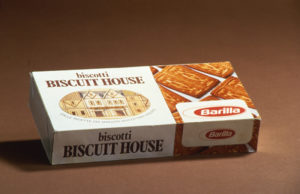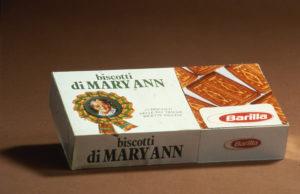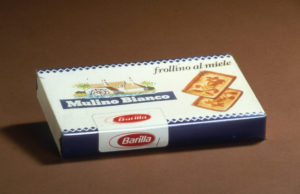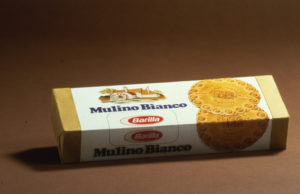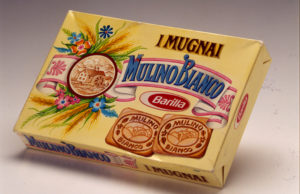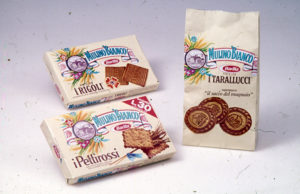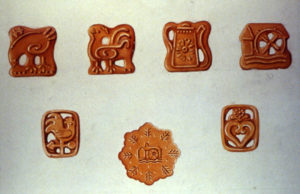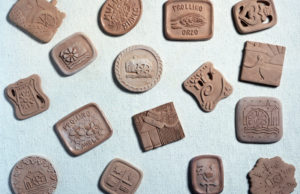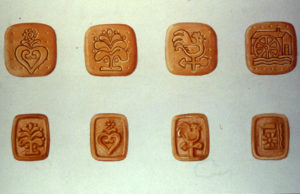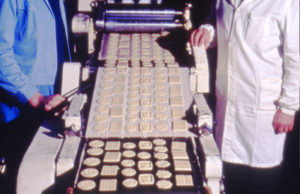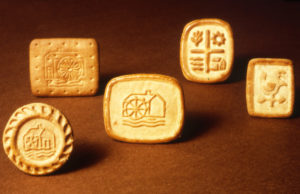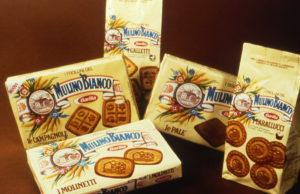There’s something new, and yet ancient
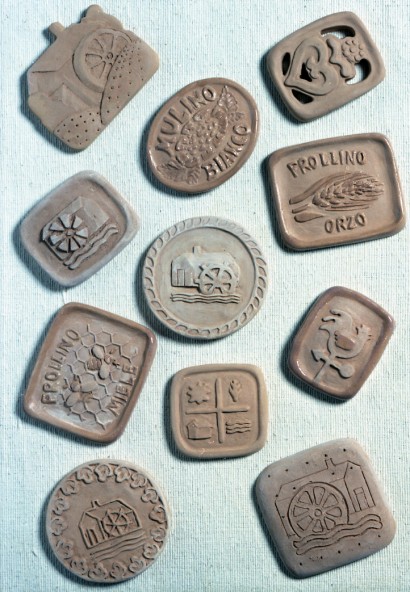
by Emmanuel Grossi
The Seventies were not an easy time for Italian economy: the oil crisis of 1973 pushed the Government to issue provisional laws to strongly limit the energetic consumes, and these ushered the nation into the so called Austerity. Its long wave, together with a plethora of problems of various nature, made it difficult for large part of the population to make the ends of an everyday family budget meet.
A controlled price was imposed on basic necessities and this made it so that Barilla steered large part of the investments on advertising of pasta towards products that were not included in the dispositions of the law. Oven baked products assumed a primary role in Carosello*, where they premiered in 1970, in the last series featuring Mina. At first, advertisement focused on “Natura e basta”** rusk bread, but a completely new line was already in the works, and was about to profoundly mark the history of the Company and the expenditure of Italians: Mulino Bianco.
Since it had no previous experience in the sector, Barilla entered into the biscuit world on tiptoe and cautiously. All around, the landscape was rather disheartening: the other companies, including historical names, were trudging along, while the new brands quickly disappeared from the scene, and many more brands launched as a spin off on the wave of the success of Mulino Bianco, who remains a fortunate and unique case, followed the same destiny.
The gaze went over the national boundaries, to the homeland of the most refined art of confectionery: England. Gianni Maestri, who was Director of the New Products Division, recalls that Edward George Maxwell, a master confectionery baker in London and “technologist with a solid culture of biscuit”, had a key role at the time.
At first, the idea was to model the British tradition for names and packaging as well, however, the contribution of the Roland Berger research institute and of Pubbicitari Associati (Associated Advertising Agents), the creative studio founded by copywriter Dario Landò, art director Sergio Mambelli, and cinema office manager and film director Andrea Cardile, was providential. They had already worked for Barilla some time earlier, when they were in the staff of McCann Erickson (as for example for the Carosello commercials featuring Mina filmed at the Bussola hall).
The market research showed indeed that only the tip of the consumers’ target was familiar with English confectionery. Instead, all felt a connection, even an affective tie, with our local peasant tradition, made of ancient taste and wholesome food. Therefore, that was the direction in which the Company oriented itself.
The operation was defined in the smallest details: Mambelli authored and designed hundreds of formats for biscuits that, between décor and irregular shapes, appeared as much as possible as homemade; in place of the classic tin boxes or modern and functional containers, it was opted for paper bags that recalled the bags used for bread. Genuine ingredients were chosen (like fresh eggs and milk rather than powdered, cream, honey…), and this was so countercurrent (those were the years when food adulteration was common) that Landò recalls that they were reprimanded by RAI*** as it thought that the images of milk and egg yolks pouring showed in short commercials were false advertising… however, the Company has the reality of facts on its side.
Carosello* – an Italian television commercial advertisement show that was on air from 1957 to 1977
Natura e basta** – literally, “Only Nature”
RAI*** – Italian public television broadcaster
